1lumen selects and reviews products personally. We may earn affiliate commissions through our links, which help support our testing.
Sofirn IF23 review
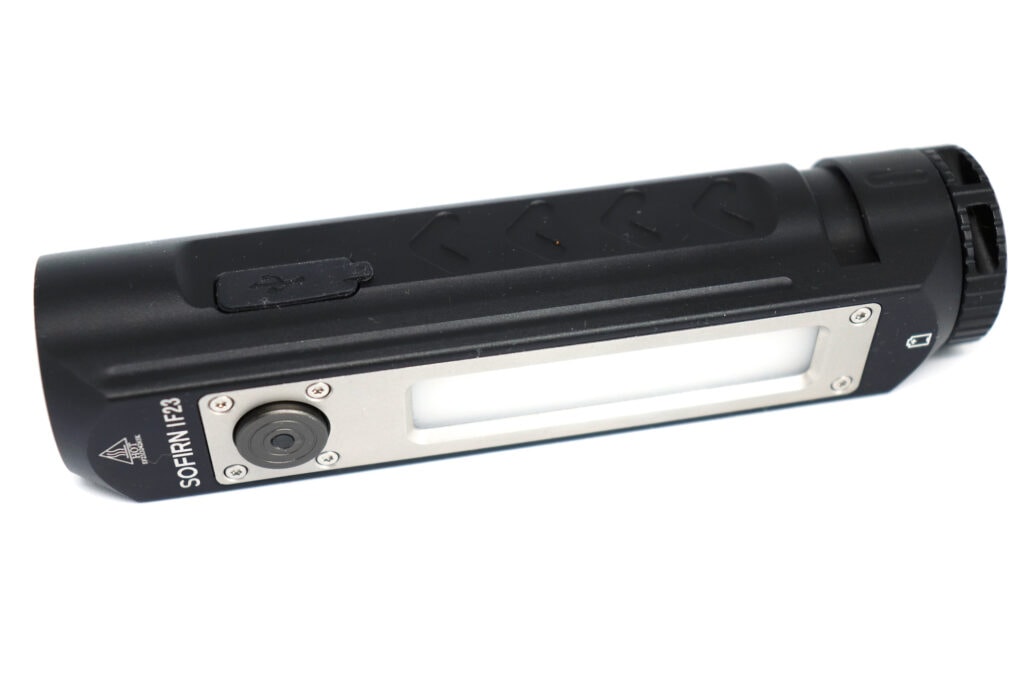
Sofirn IF23 specs
| Brand & Model | Sofirn IF23 |
|---|---|
| Flashlight category | Camping, general use |
| LED | XHP50B 6000-6500k + flood LEDs |
| Max. output | 4000 lumens (spot) / 500 lumens (flood) |
| Max. beam distance | 247 meters |
| Max. beam intensity | 15275 cd |
| Battery config. | 1 x 21700 |
| Onboard charging | Yes |
| Main modes | Many |
| Blinkies | Yes |
| Waterproof | IP68 |
| Review publication date | June 2023 |
Review intro:
Sofirn has become quite a force in the flashlight community over the past few years. This new offering is the IF23 which combines multiple LEDs to offer spot and flood beam profiles using the ever popular 21700 battery format.
Package quality.
The IF23 comes in a pretty retail style packaging with a plastic insert to hold the items. Sofirn include a number of items with the light:
- Sofirn 21700 5000Mah battery
- USB-C cable
- Pocket clip
- Lanyard
- Spare O-ring
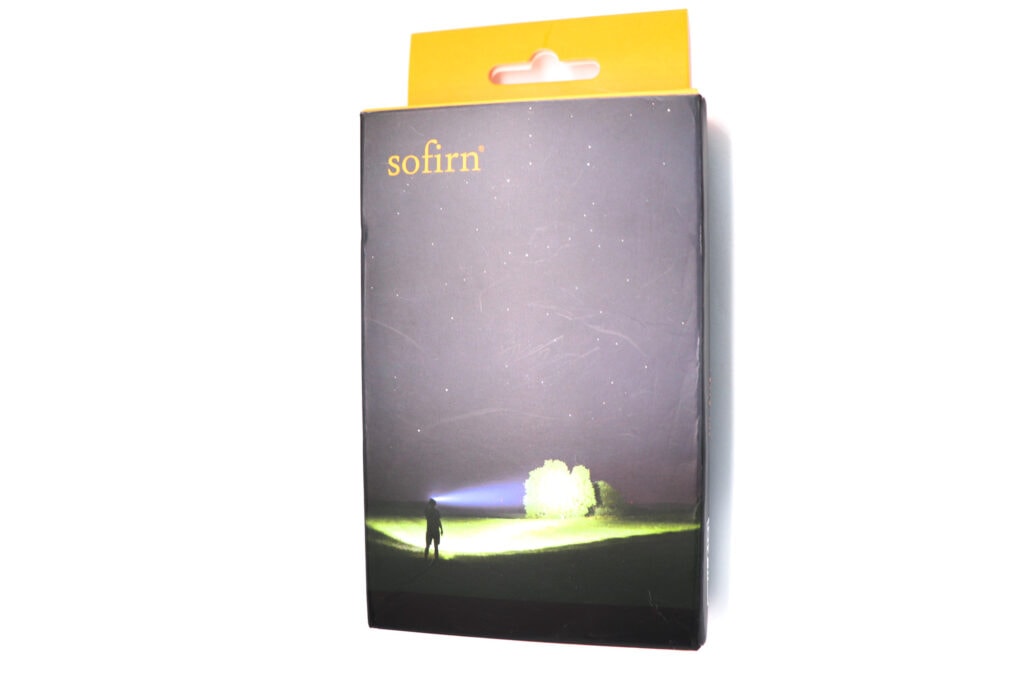
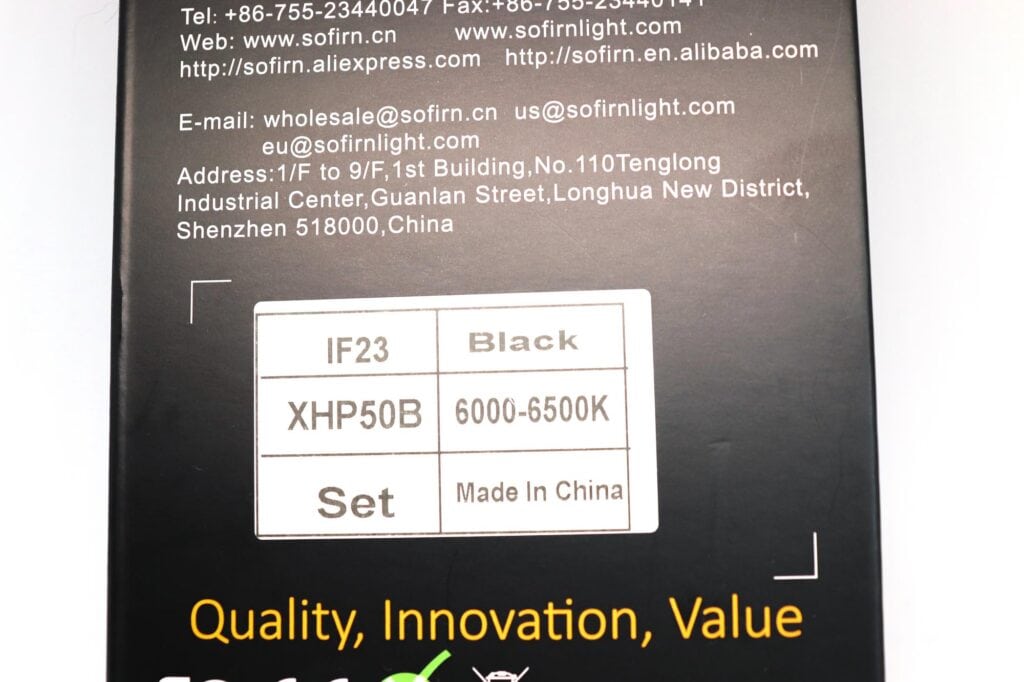
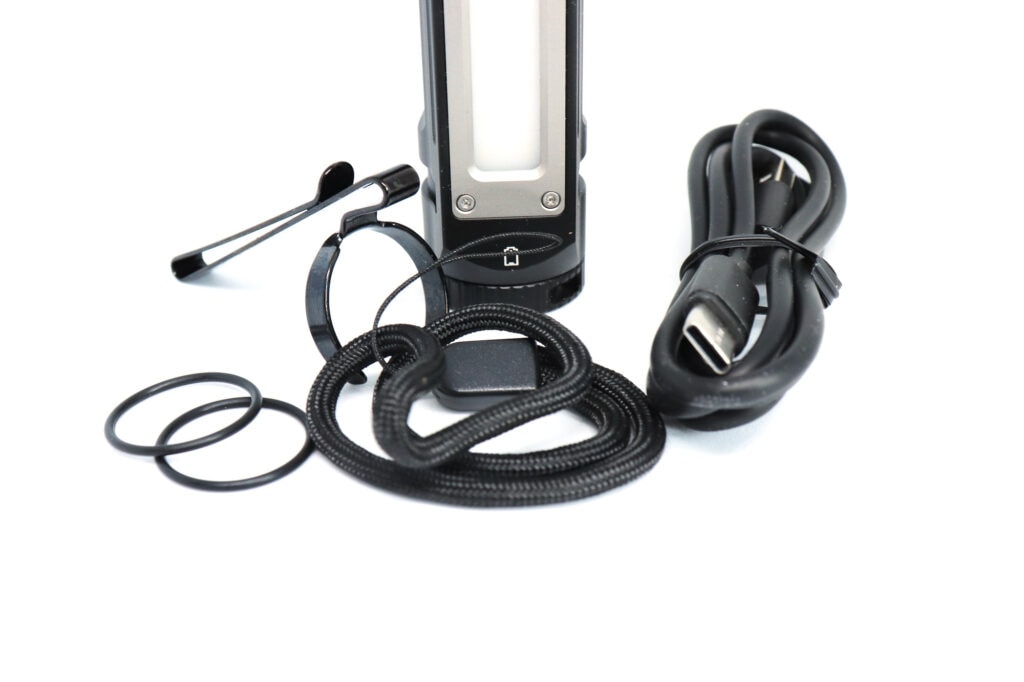
Flashlight in use
The IF23 is compact, but heavy. It is small enough to EDC and the pocket clip lends itself to this kind of use. Although the side button protrudes quite a lot. The flood light part of the light screams camping at me. Although having the magnet in the tailcap could prove useful under a car bonnet or somewhere metal that you could stick the light.
Overall it has a fairly broad general use kind of feel to the light.
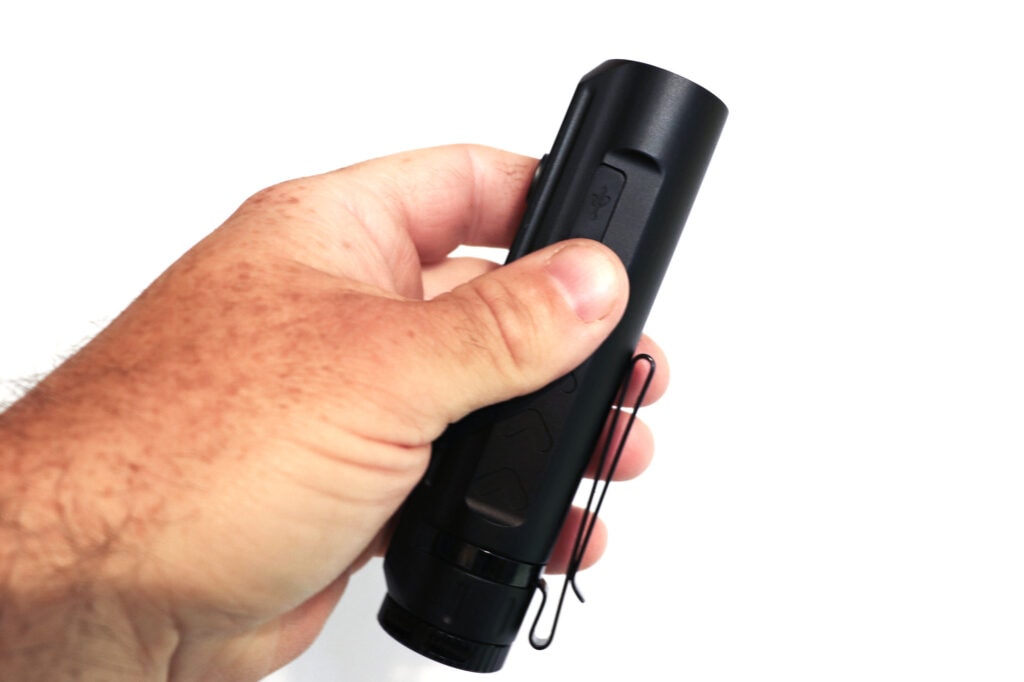
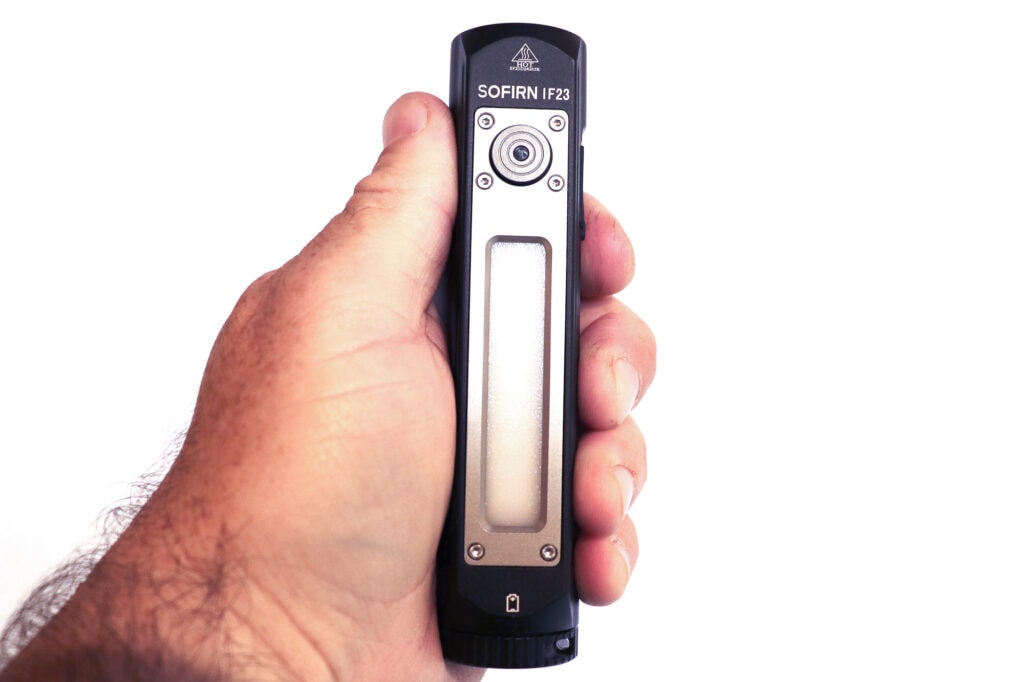
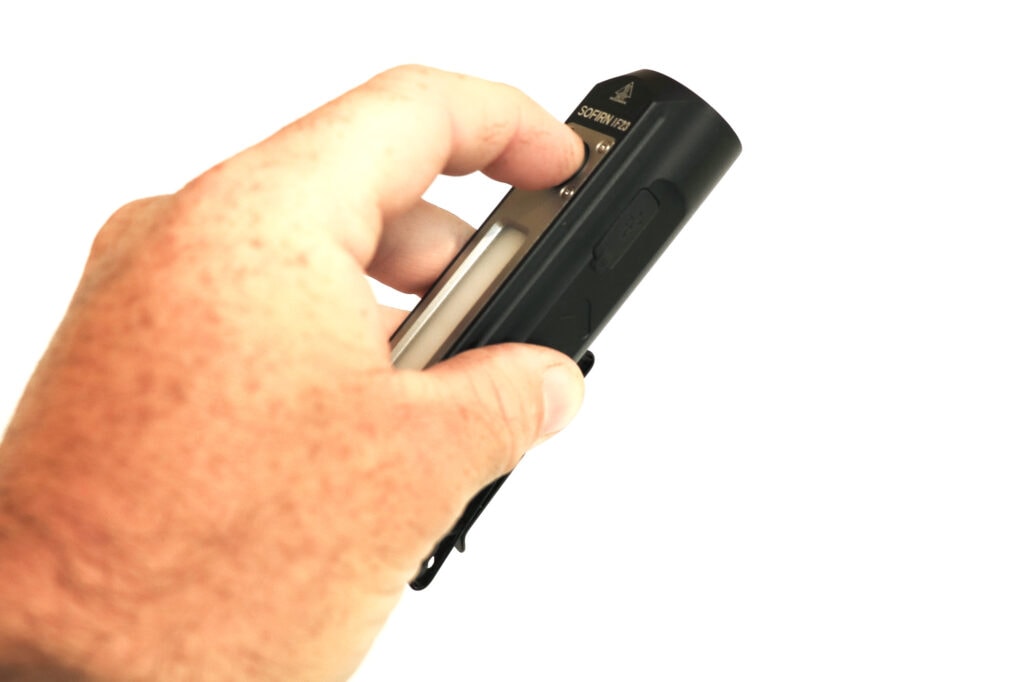
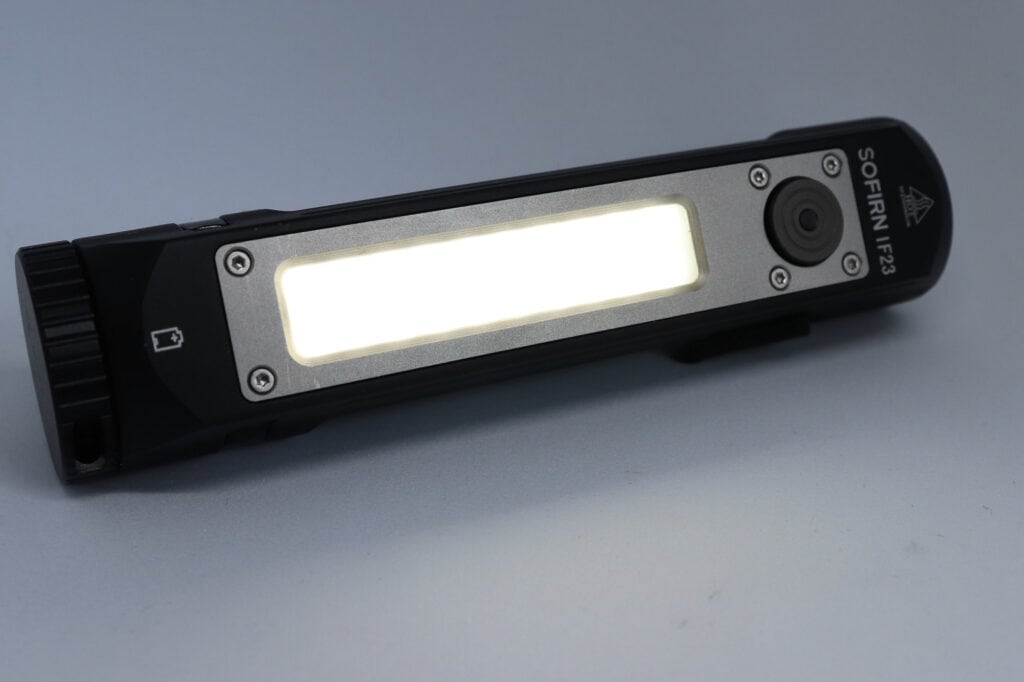
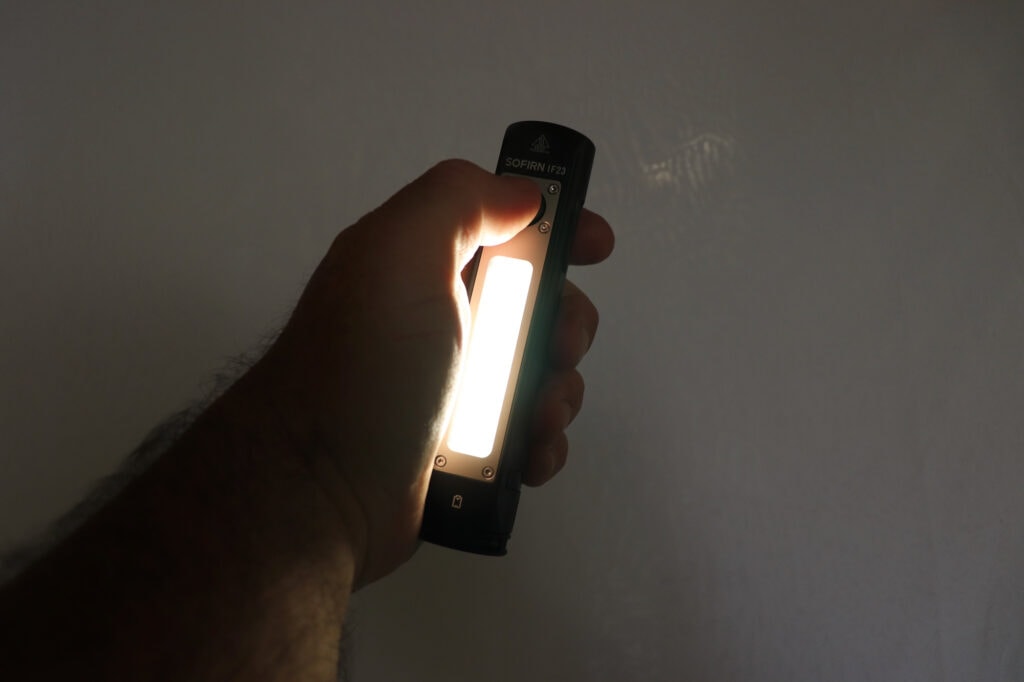
Build Quality and Warranty
The build quality seems pretty good. The anodising is smooth as are the threads. It is a heavy old lump in your pocket though. I’d guess not one for the modders either, but it seems to be well screwed together with no sharp edges anywhere.
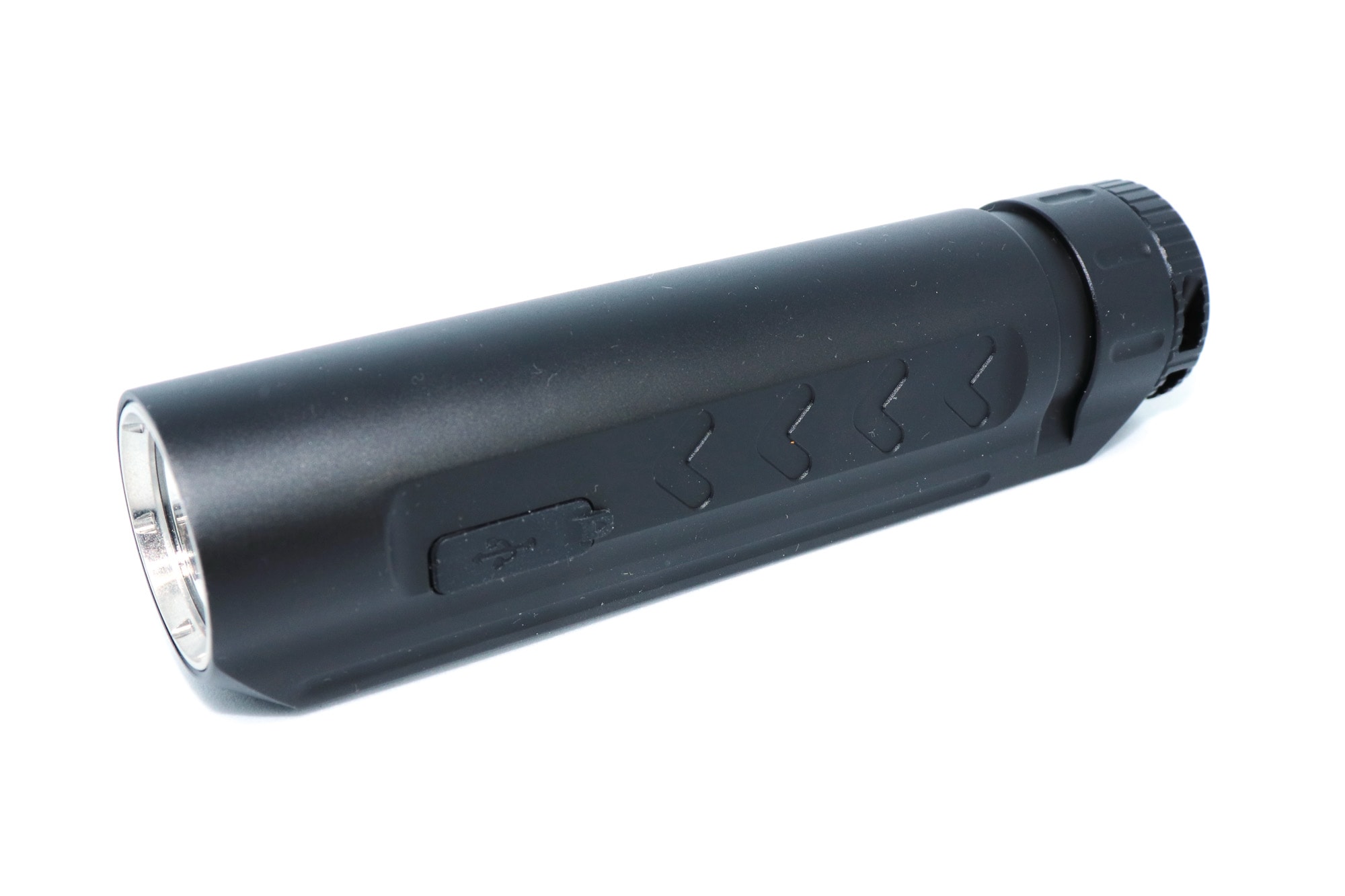
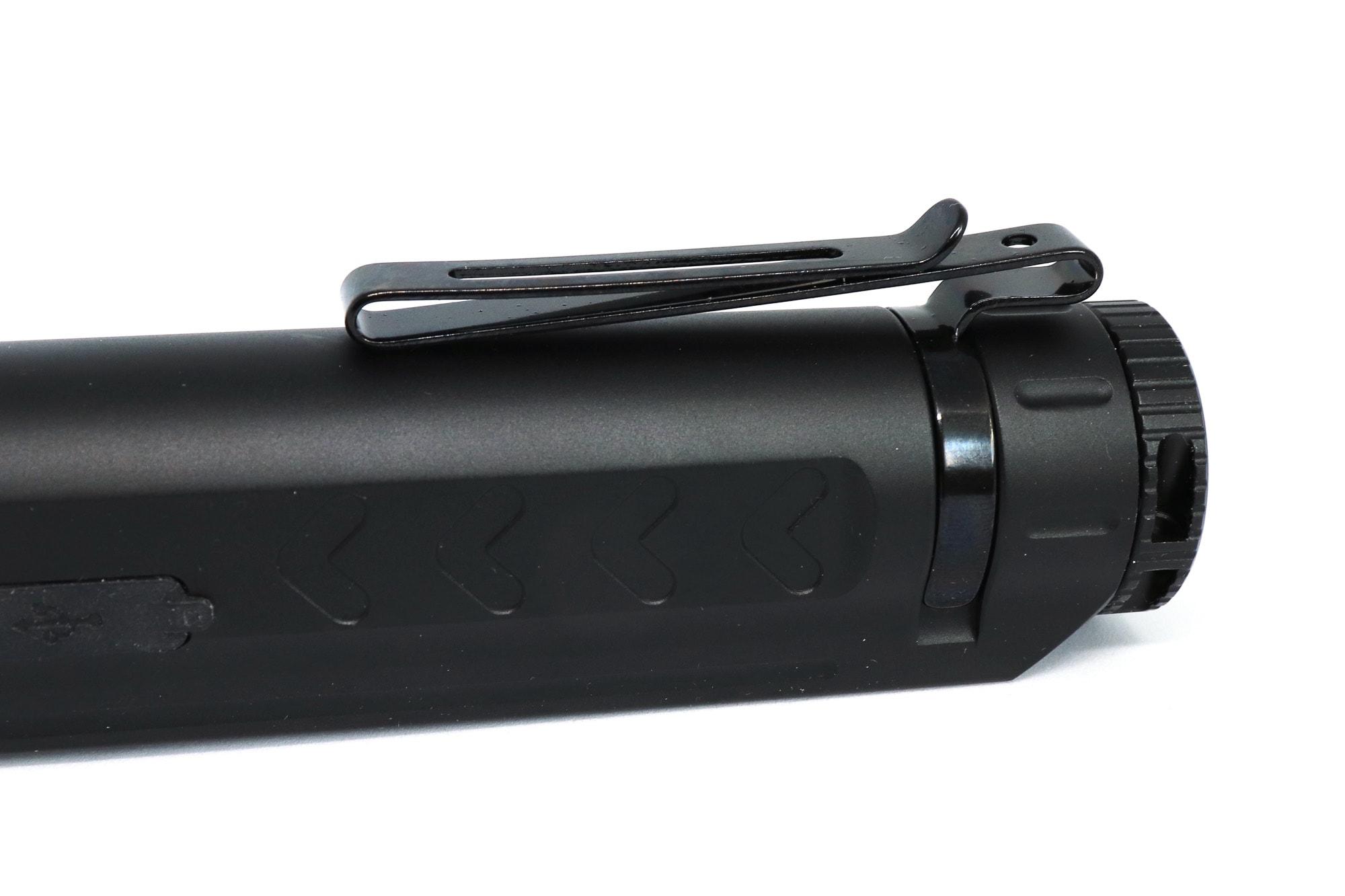
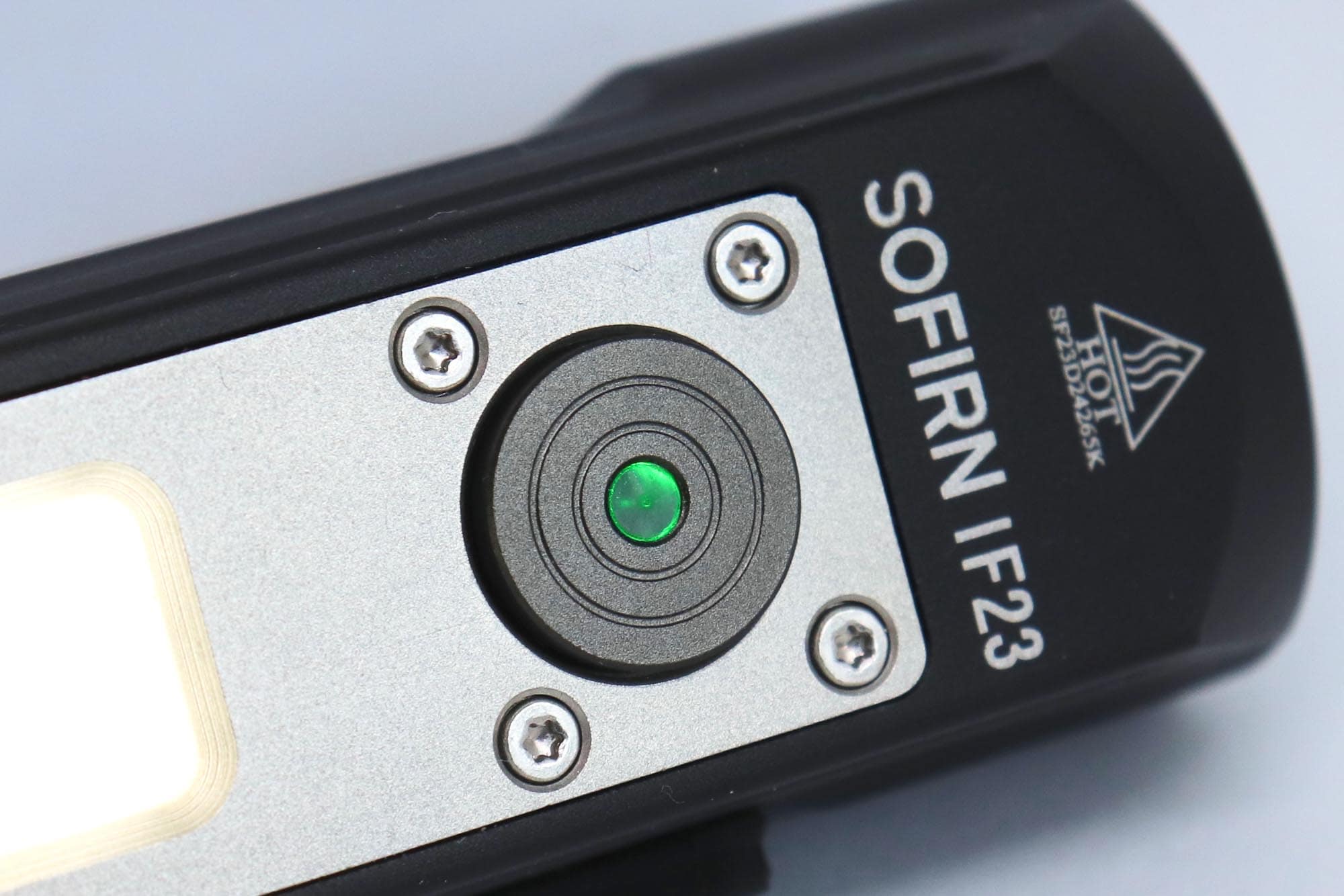
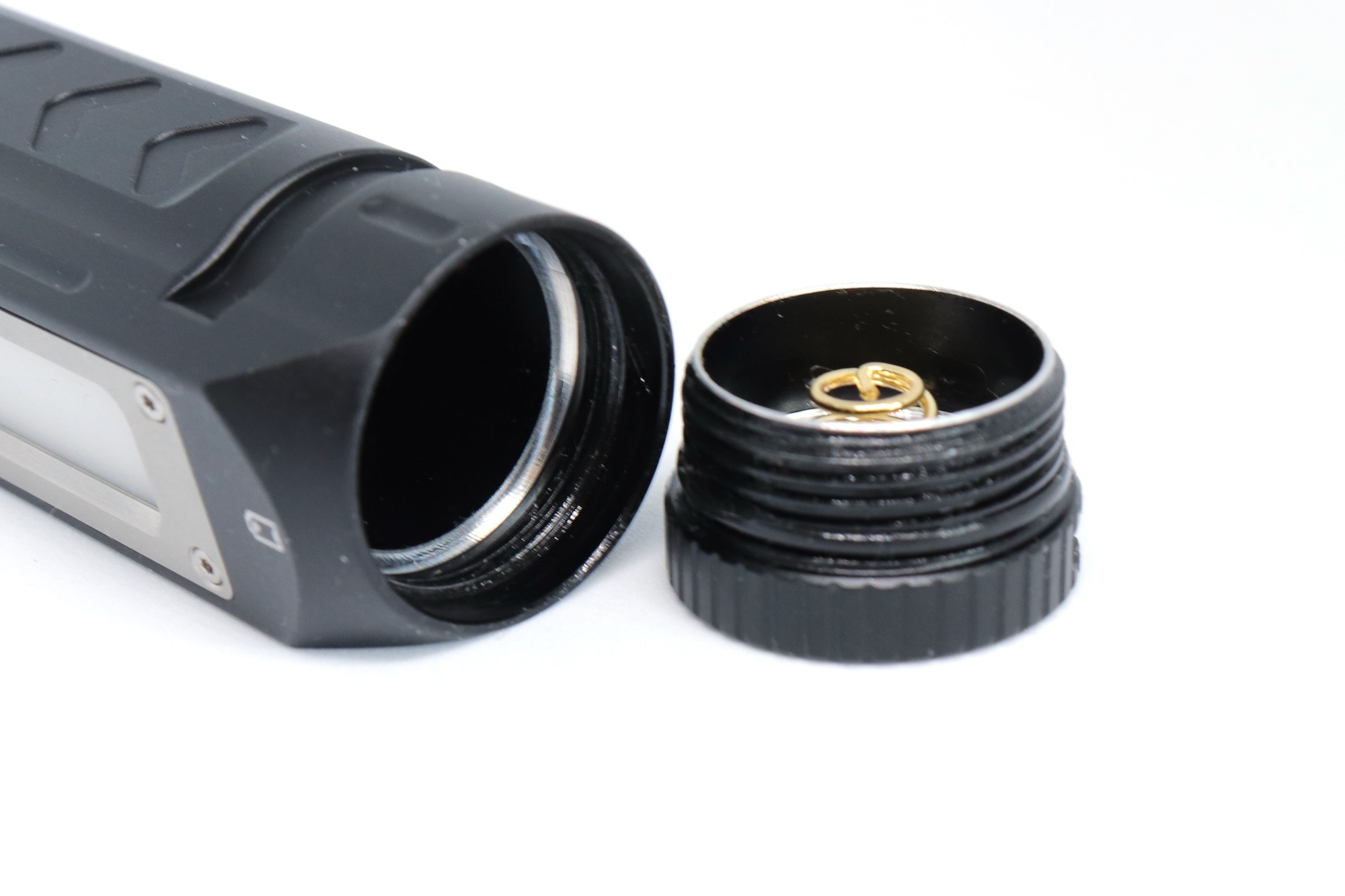
LED, Lens, Bezel, Beam, and Reflector
The IF23 has a recessed silver bezel/retaining ring on the front. I would assume this is stainless steel. There is a mild orange peel (MOP) reflector and a class lens covering the large, but very cool white XHP50B LED. This is the “spot” end of the IF23. The beam profile is quite nice, with a smooth beam and more flood than you’d normally associate with a “spot” beam. Mean distance is moderate to short.
Along the side of the IF23 below the switch is a panel housing 20 small CSP1313 LEDs for the flood light feature. And nestled between these 20 LEDs is another 10 colour JF-387F-Y LEDs for the colour feature. The panel and switch are contained in a silver anodised surround.
All of this feels solid and well put together, although somewhat angular and chunky in the hand.
The flood beam is smooth with variable output, although no Kelvin rating is given, it is similar to the spot light by eye.
The colour lights can ramp across a range of colours from purple to yellow. Although I am rather baffled at what you’d use the colour lights for apart from a novelty feature. In which case I’d prefer them to not be there at all. While you can change the colour I have not seen or found a way to vary their output. Making them completely redundant for any kind of real world use.
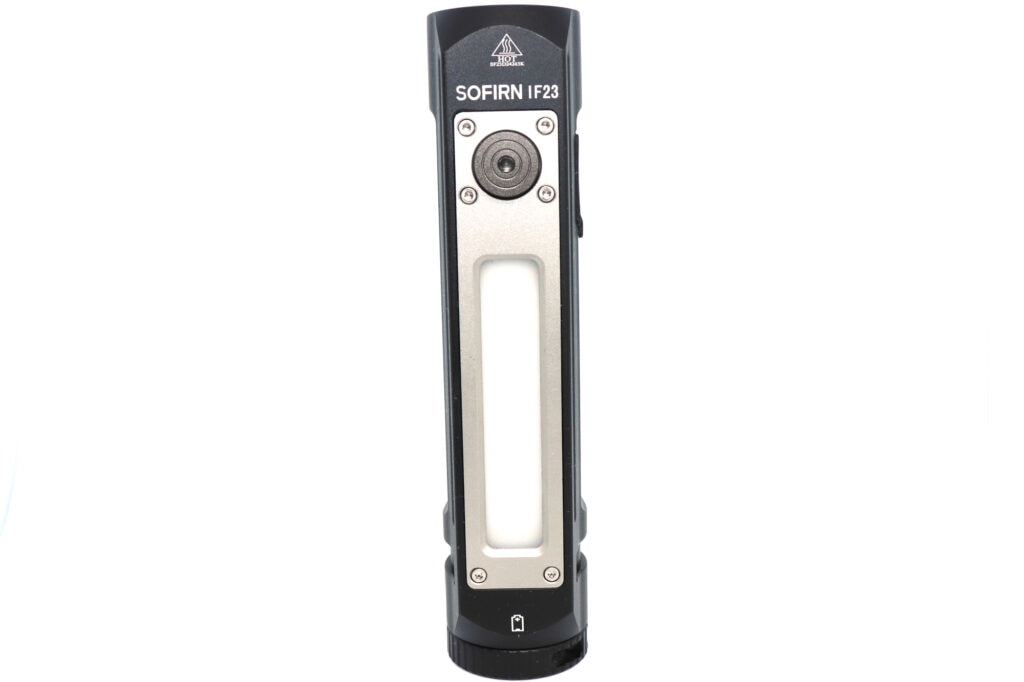
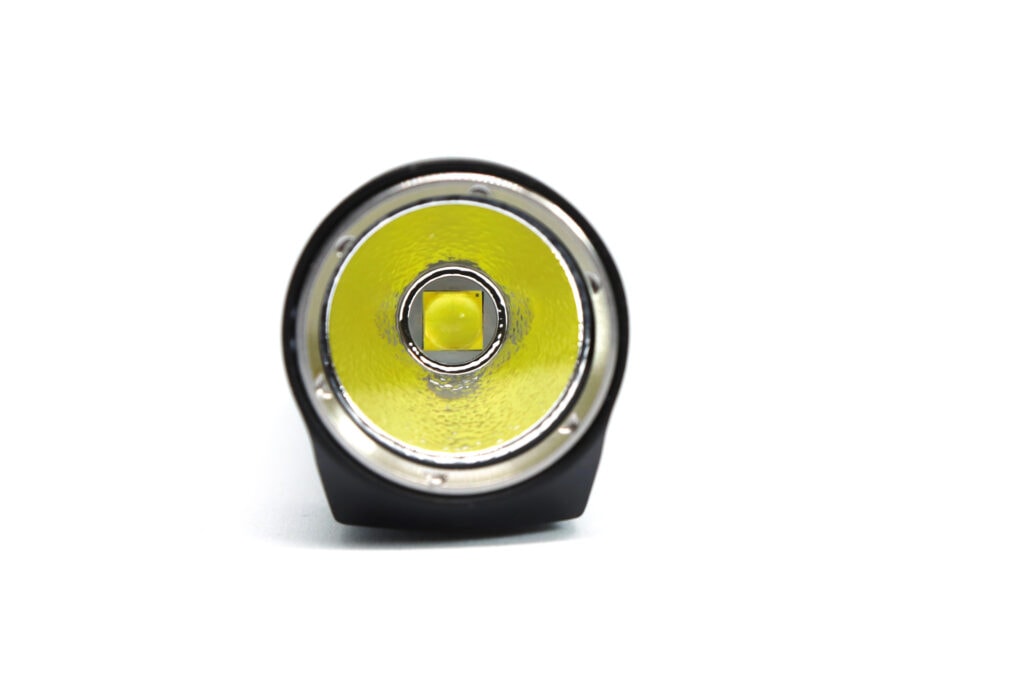
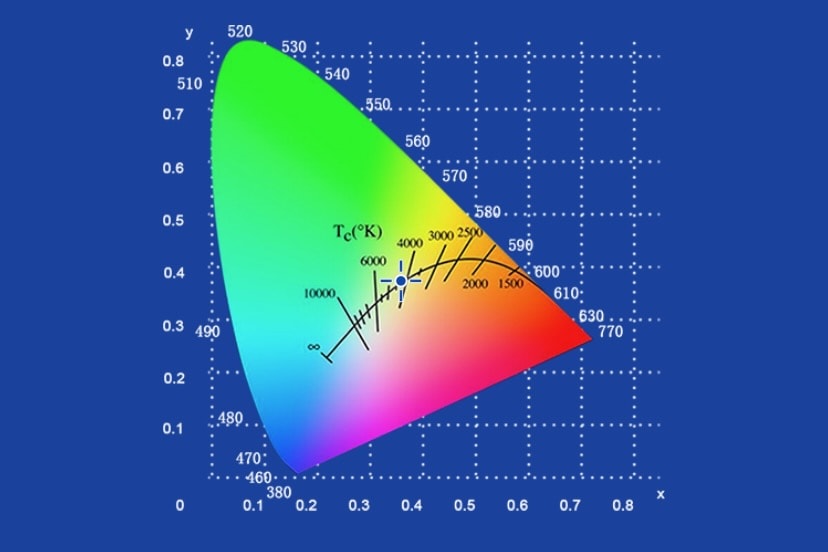
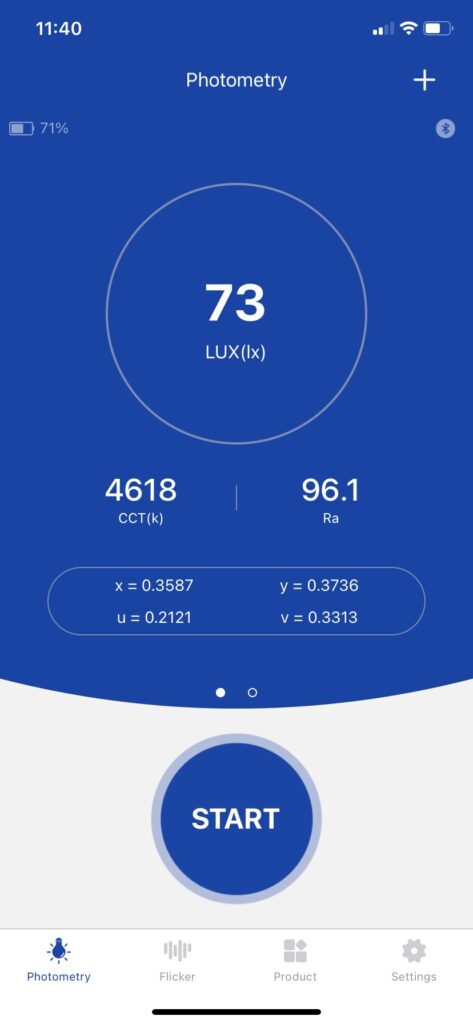
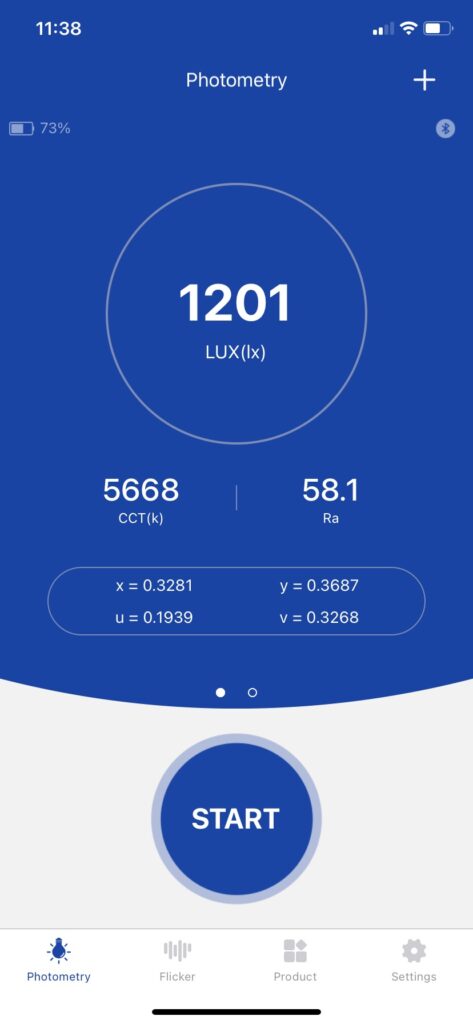
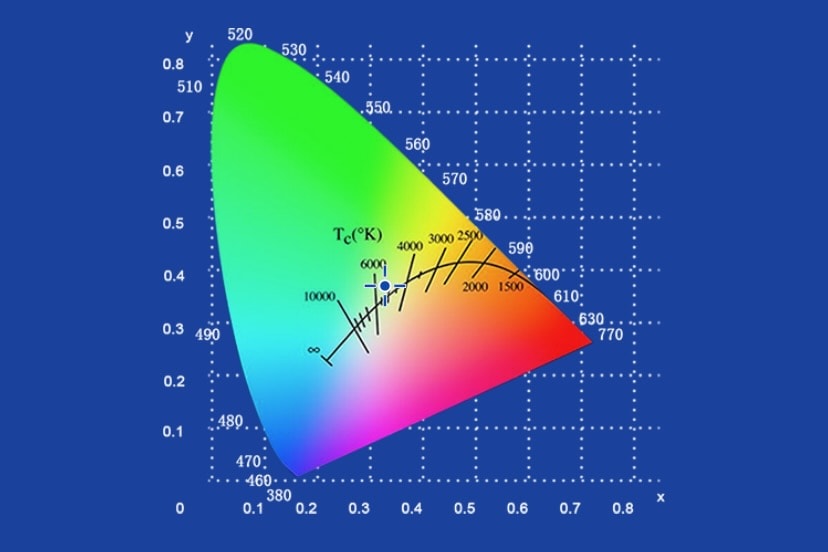
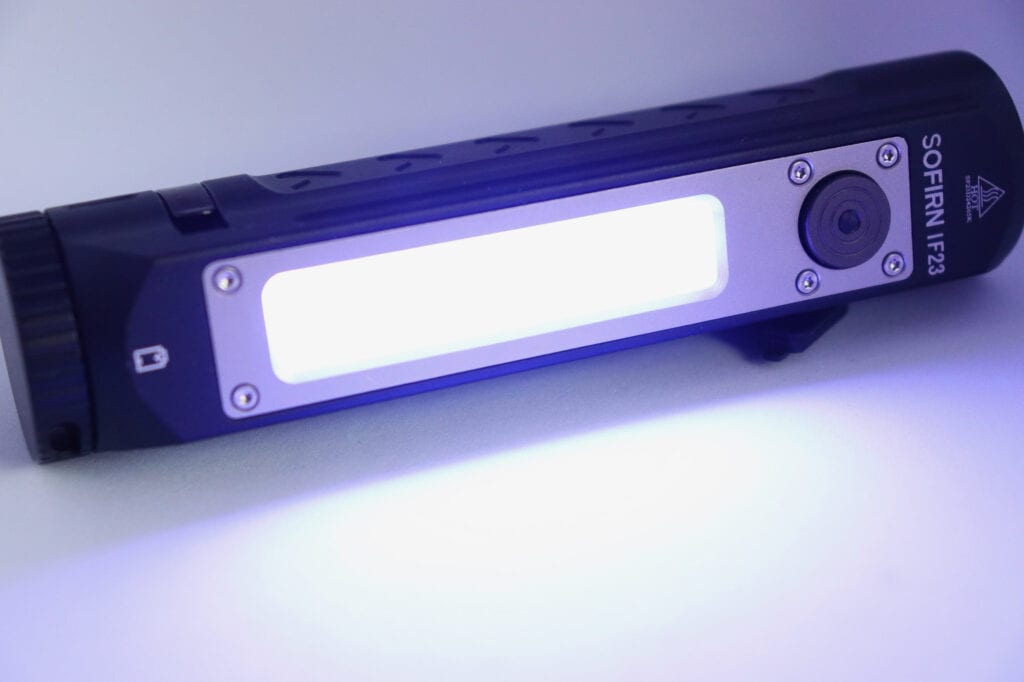
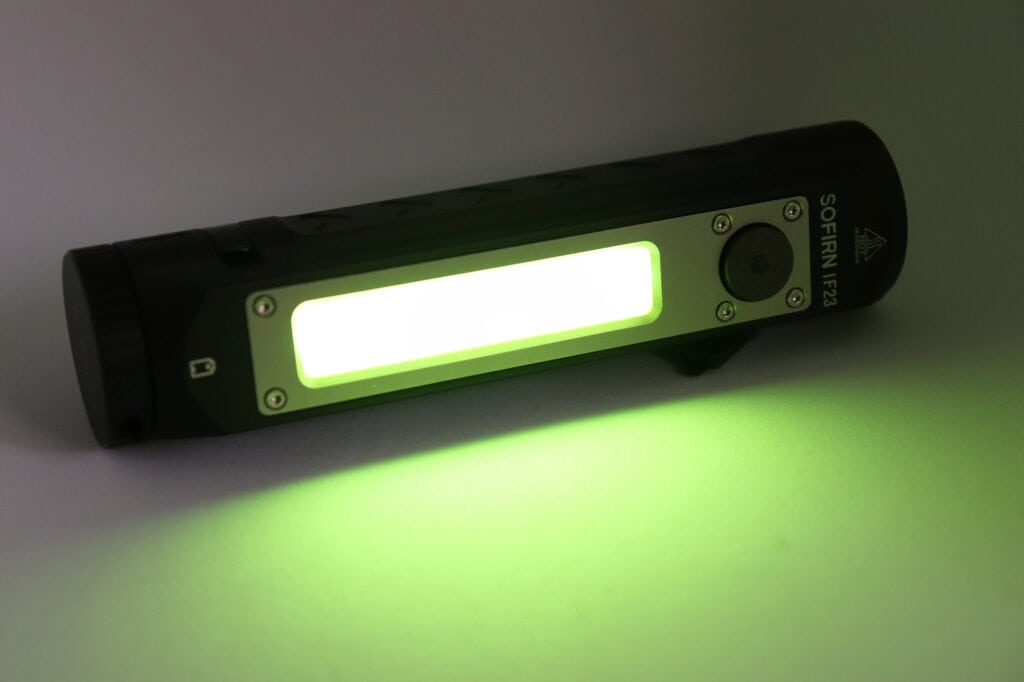
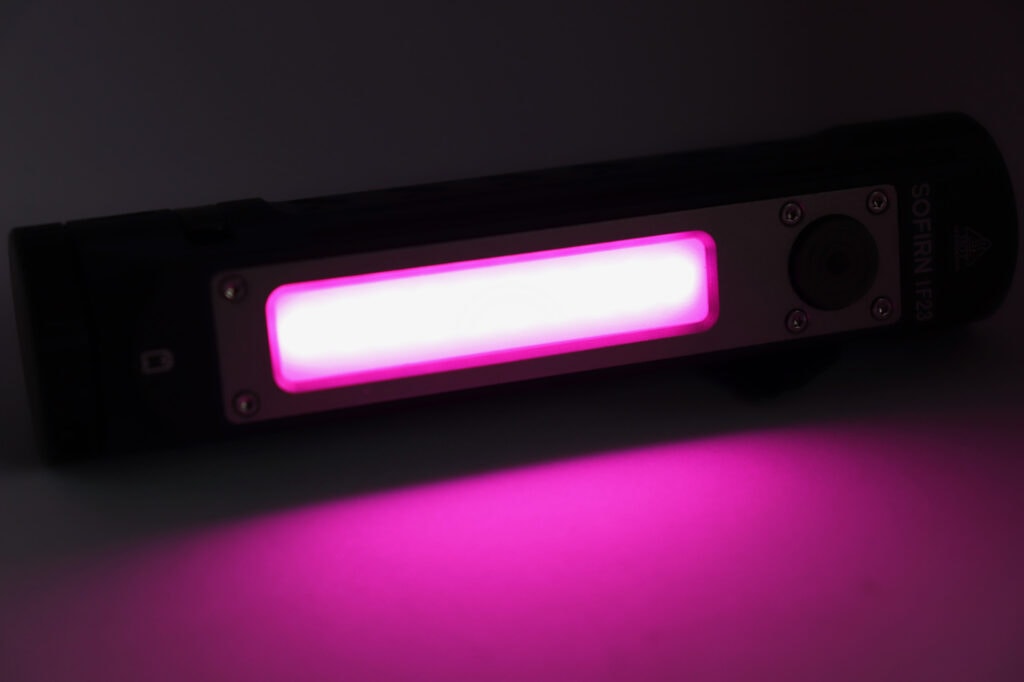
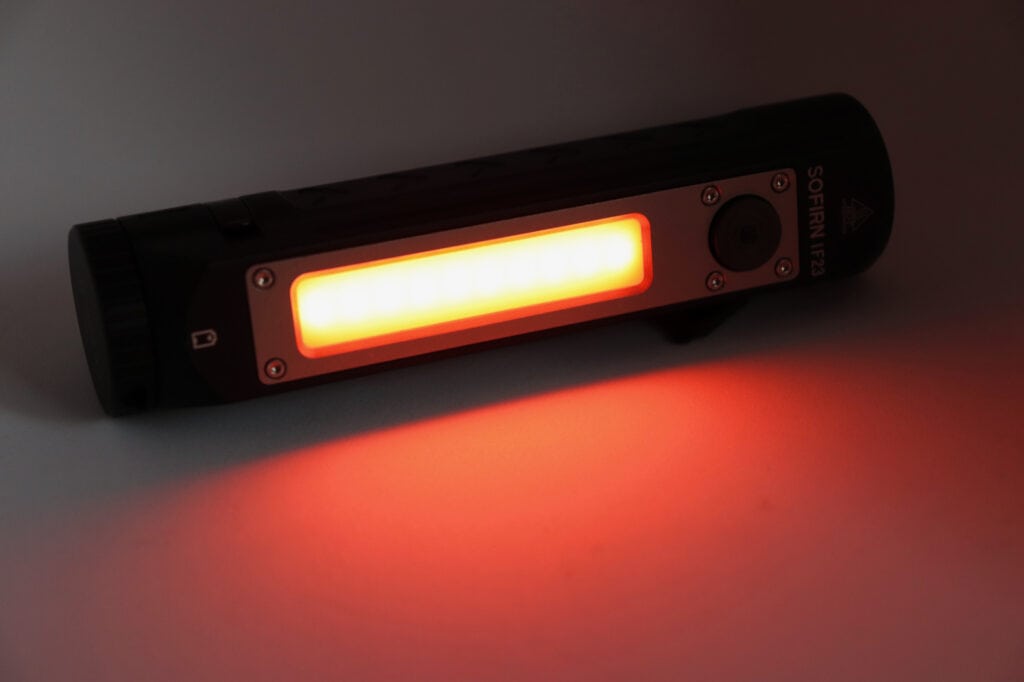
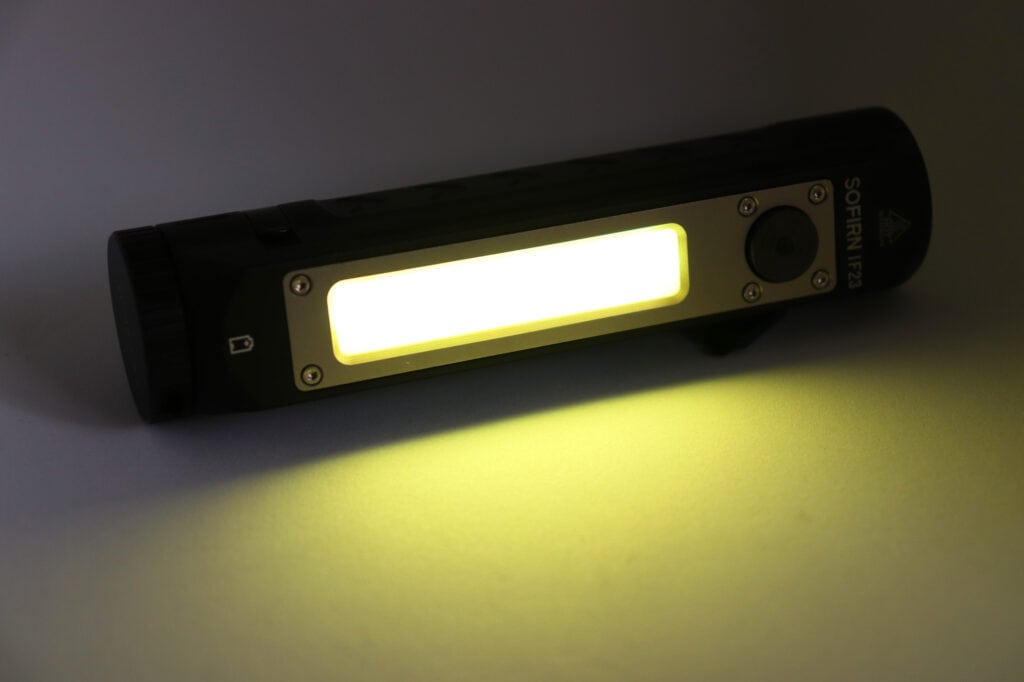
Dimensions and its competition
Dimensions:
| Sofirn IF23 | Millimeters | Inches |
|---|---|---|
| Length | 120.5mm | 4.75 in |
| Head diameter | 30 mm | 1.2 in |
| Body diameter | 27.5mm | 1.1 in |
Dimensions are rounded to the nearest millimeter, and to the nearest tenth of an Inch.
Weight:
| Sofirn IF23 | Weight in grams | Weight in oz |
|---|---|---|
| Without battery: | 125g | 4.4 oz |
Weight is rounded to the nearest gram, and to the nearest tenth of an Oz.
Flashlight size comparison with its competition:
Group 1: Sofirn IF23, Maglite XL200
Group 2: Sofirn IF23, ZebraLight SC600w IV Plus, Nitecore LA30
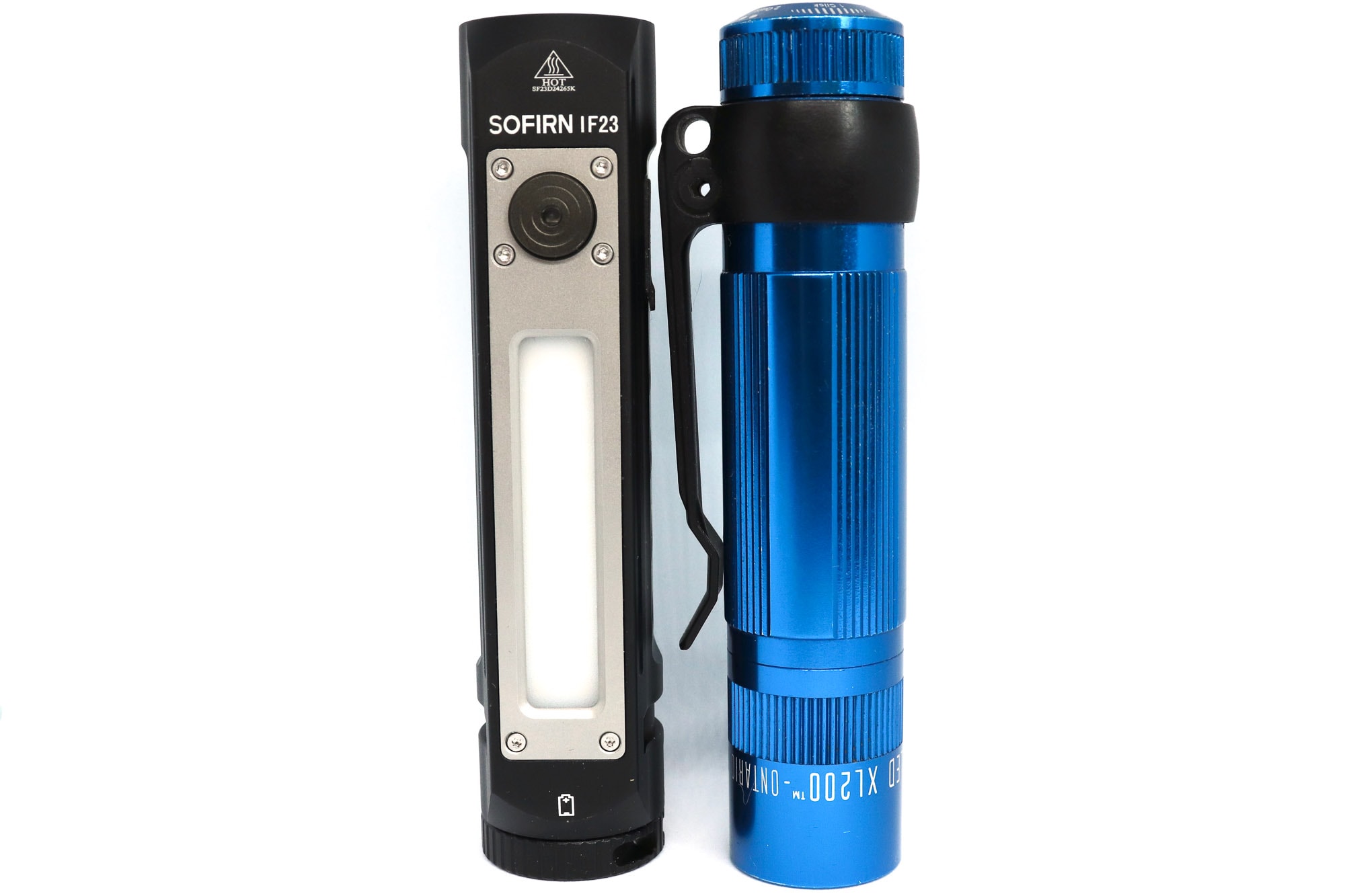
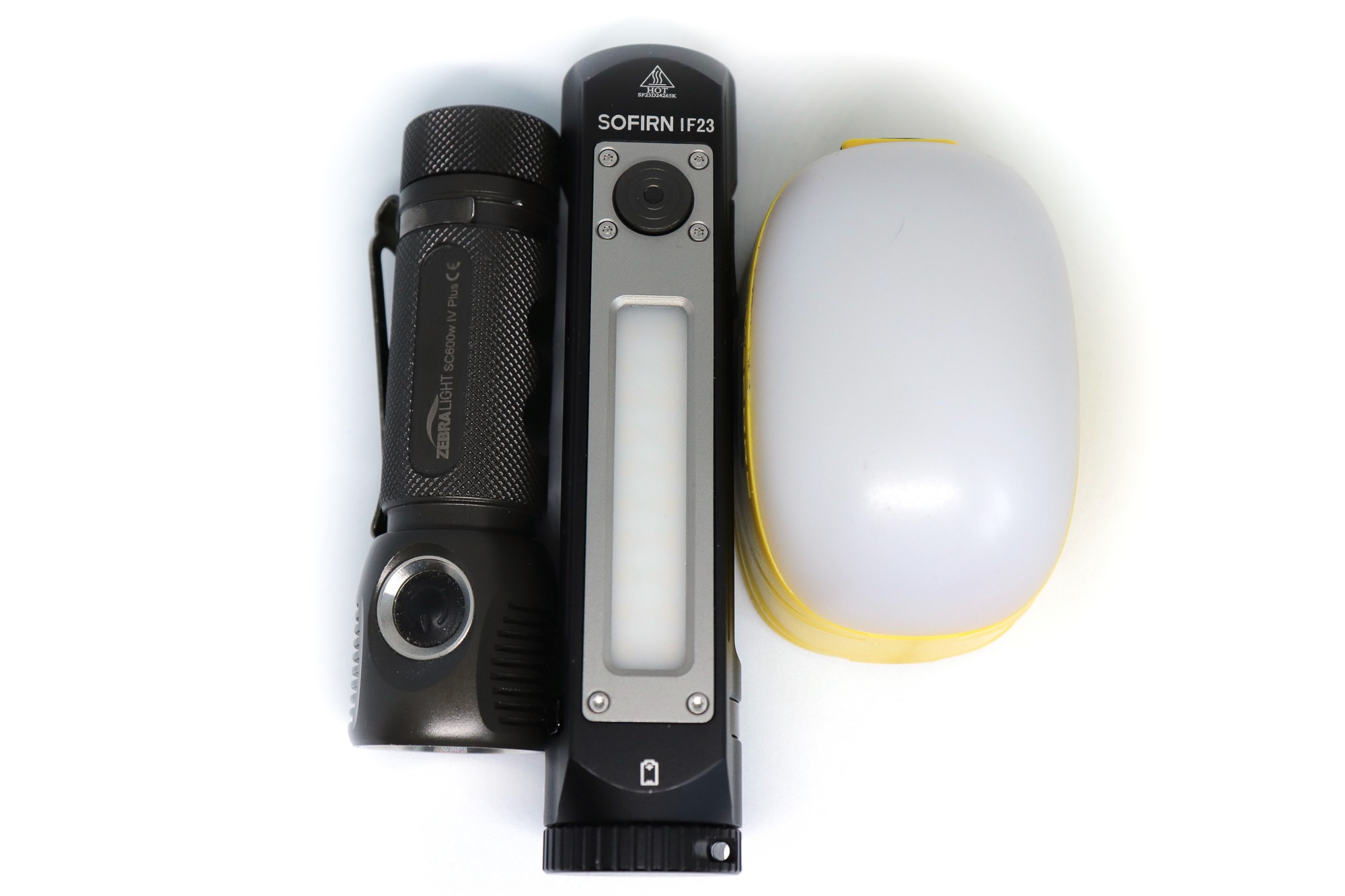
Sofirn IF23 UI: User Interface and Driver
The user interface is certainly the area I have most complaints with on the IF23. For me, a staple of a good UI is one you can figure out and use without the need for instructions. In the case of the IF23, even having the instructions in front of you, it is still a real chore to try and fathom.
I think its main issue is, it is trying to do way too many things from a single switch. Plus it does some things automatically in the background. I have been unable to completely understand all of the actions the light does. I have certainly used it in a way that isn’t covered in the instructions. But I do not know how I managed this. It also seems to do things that seem contrary to the instructions. Much of this is around the auto lockout feature. But you can certainly get yourself in a total pickle after only a few clicks. To the point you even end up unscrewing the tailcap to try and reset it.
Available modes:
- Too many :–)
Available blinky modes:
- Yes
From OFF:
- Press and hold: Moonlight
- Single click: On, but it might flash at you or something do something else
- Double click: Turbo
- 3 fast clicks: Switch to Flood or Colour mode
- 4 fast clicks: Lock
From ON:
- Press and hold: Scroll outputs
- 1 click: Off unless in Turbo
- Double click: Switch to Flood or Colour mode
- 3 fast clicks: Switch to Flood or Colour mode
- 4 fast clicks: Lock
Mode memory:
- I think so, although it is unclear how it is set and when it is activated
Shortcuts:
- To Low: Sometimes
- To Turbo: Usually but not always
- To Strobe: No
Low voltage warning:
- Yes, the switch has another coloured LED to show battery state
Strobe/blinkies
- Multiple modes
Lock-out mode:
- Yes, it is automatic after 3 mins or you can manually lock it. I have not found a way to disable the auto locking feature sadly.
PWM
- None that I could detect
Additional/summary info on the UI:
- Probably one of the worst UI’s on the market
Sofirn IF23 Charging and batteries
Sofirn does include a 5000mAh battery with the IF23 and as it has onboard charging you are ready to go without any other hardware. They even include a suitable length USB-C charging cable.
Charging is very easy, pop open the rubber cover of the USB-C port and plug it in. The light in the middle of the switch will be red for charging and green for fully charged. The switch light also works as a battery meter too which is handy.
The included battery does seem to hold the light back in terms of performance, I found significantly more output using a slightly better INR 21700 battery, but the included one will get the job done.
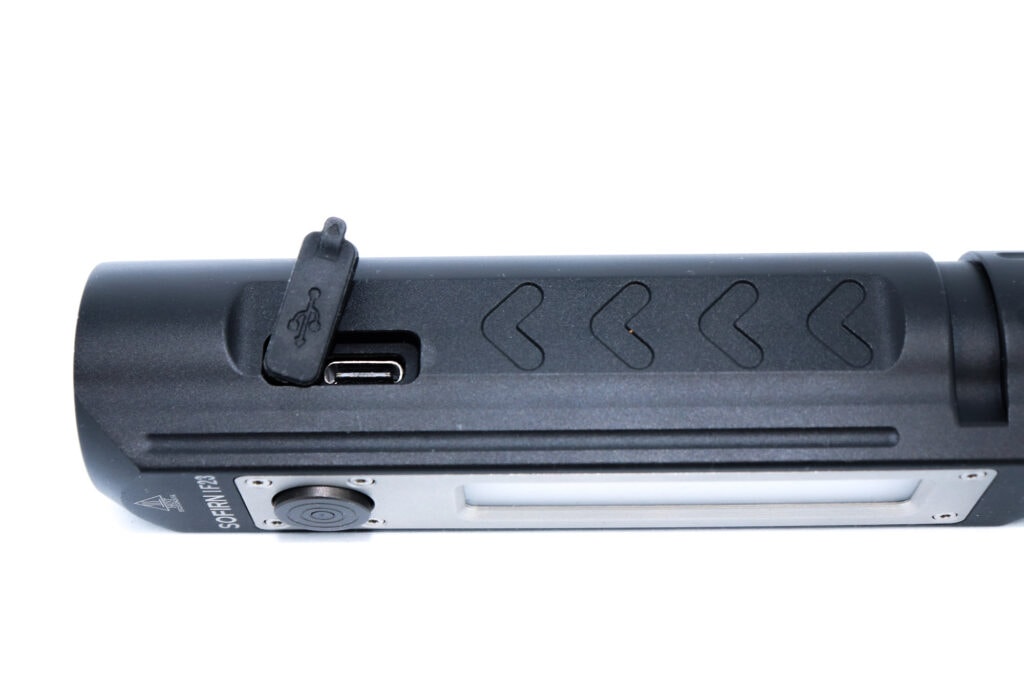
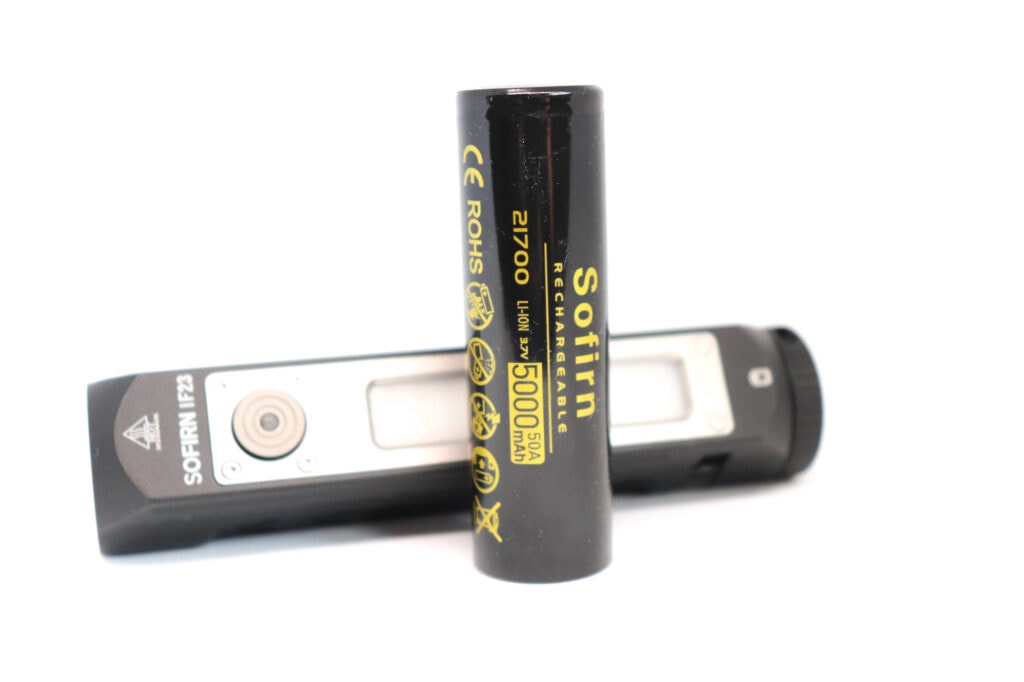
Performance test
Lumen measurements
How Lumens are Measured: Understanding ANSI FL1 Standards How Lumens are Measured: Understanding ANSI FL1 Standards: The ANSI FL1 standards specify that output in lumens should be measured 30 seconds after turning on, as this is the standardized time for measuring brightness according to the industry standard. This is why we focus on this part in our measurements. The ANSI FL1 standards require an ambient temperature of 22 ± 3°C. We record the ambient the ambient temperature to identify potential reasons for any observed discrepancies.Lumen measurements (for each mode)
** Sofirn 5000mAh 21700 battery
* Molicel INR 21700 battery
The IF23 seemed to perform significantly better using the Molicel battery rather than the supplied Sofirn branded one.
Spot Mode:
| Mode | Specs | turn on | 30 sec | 10 minutes |
|---|---|---|---|---|
| Moon | 1 | 1* | 1* | 1 |
| Low | 100 | 110* | 109* | – |
| Med | 500 | 480* | 477* | – |
| High | 1500 | 1257* (1070**) | 1228* (1051**) | 635* |
| Turbo | 4000 | 3251lm* (2831**) | 2968 lm* (2644**) | 525* |
Flood Mode:
| Mode | Specs | turn on | 30 sec | 10 minutes |
|---|---|---|---|---|
| Moon | 1 | 6 | 6 | 6 |
| Low | 10 | 18 | 18 | 18 |
| Med | 50 | 135 | 134 | – |
| High | 150 | 368 | 358 | 119 |
| Turbo | 500 | 1116 | 1034 | 345 |
Battery Life: Runtime graphs
How Runtimes are Measured: Understanding ANSI FL1 Standards About ANSI FL1 runtime standards: The runtime is measured until the light drops to 10% of its initial output (30 seconds after turning on). This does not mean that the flashlight is not usable anymore. The last column shows how long the light actually works till it shuts off. If there is a + symbol, it means that the test was stopped at that particular point, but the light was actually still running. This happens on certain occasions, with certain drivers, firmware, or batteries.Spot:
| Mode | Specified runtime | Measured runtime ANSI | Time till shut off |
|---|---|---|---|
| Moon | 27 days | ? | ? |
| Low | 17h 36min | ? | ? |
| Med | 4h | ? | ? |
| High | 2h 30min | 3h 21min | ? |
| Turbo | 2h | 2h 42min | ? |
Sofirn does not display any claims for the floodlight runtimes in the instruction manual.
Flood:
| Mode | Specified runtime | Measured runtime ANSI | Time till shut off |
|---|---|---|---|
| Moon | ? | ? | ? |
| Low | ? | ? | ? |
| Med | ? | ? | ? |
| High | ? | 3h 30min | ? |
| Turbo | ? | 3h 30min | ? |
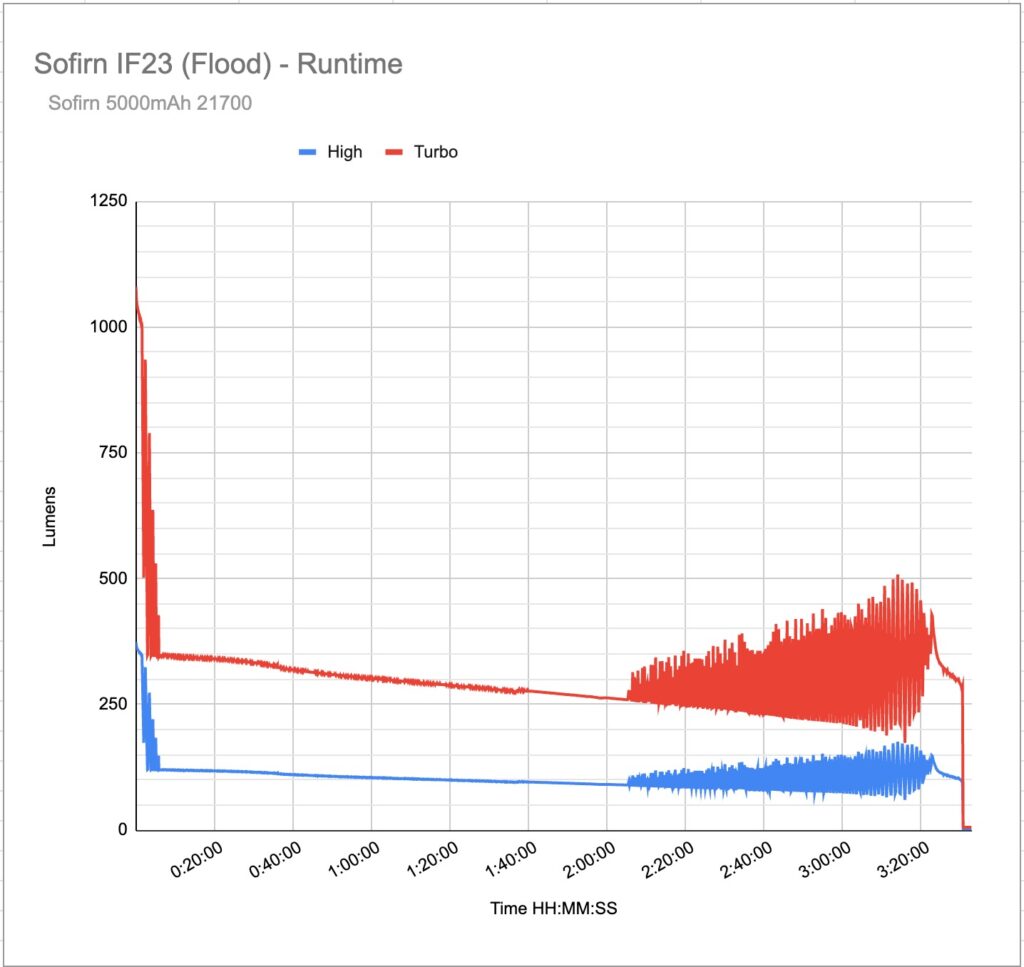
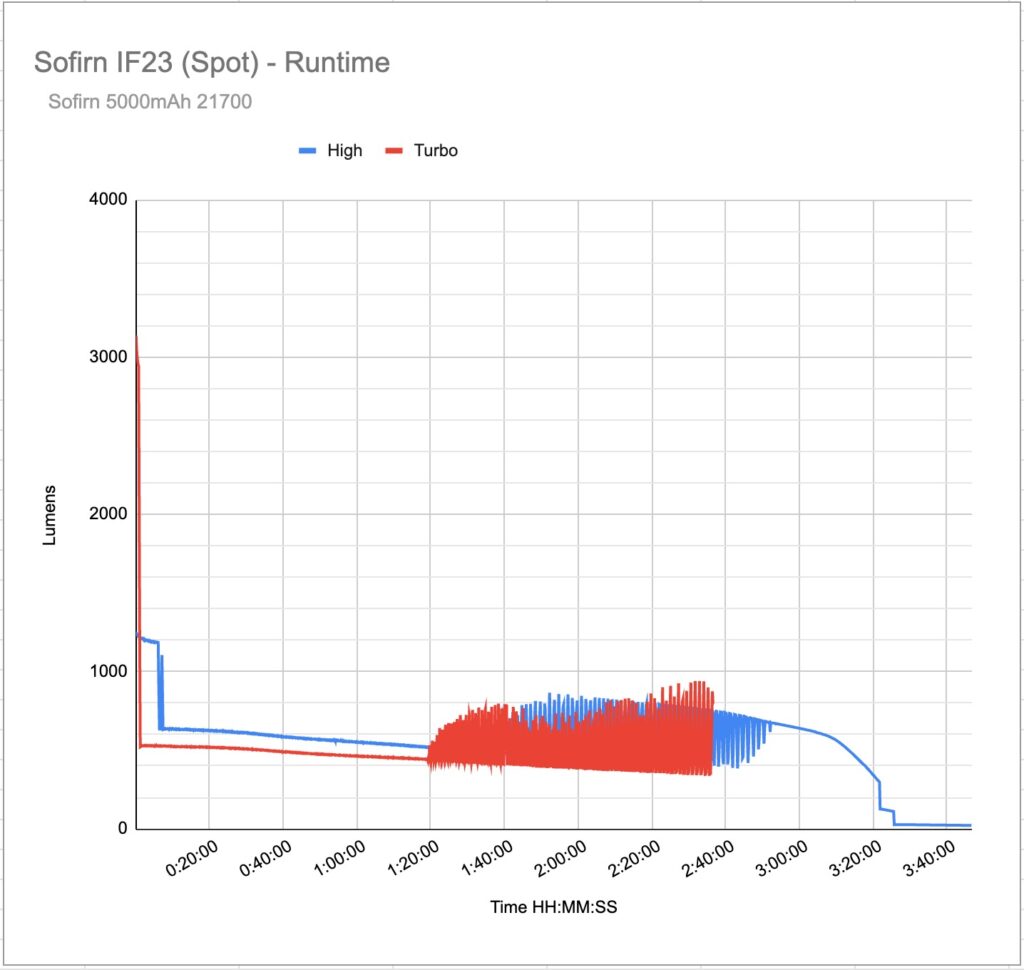
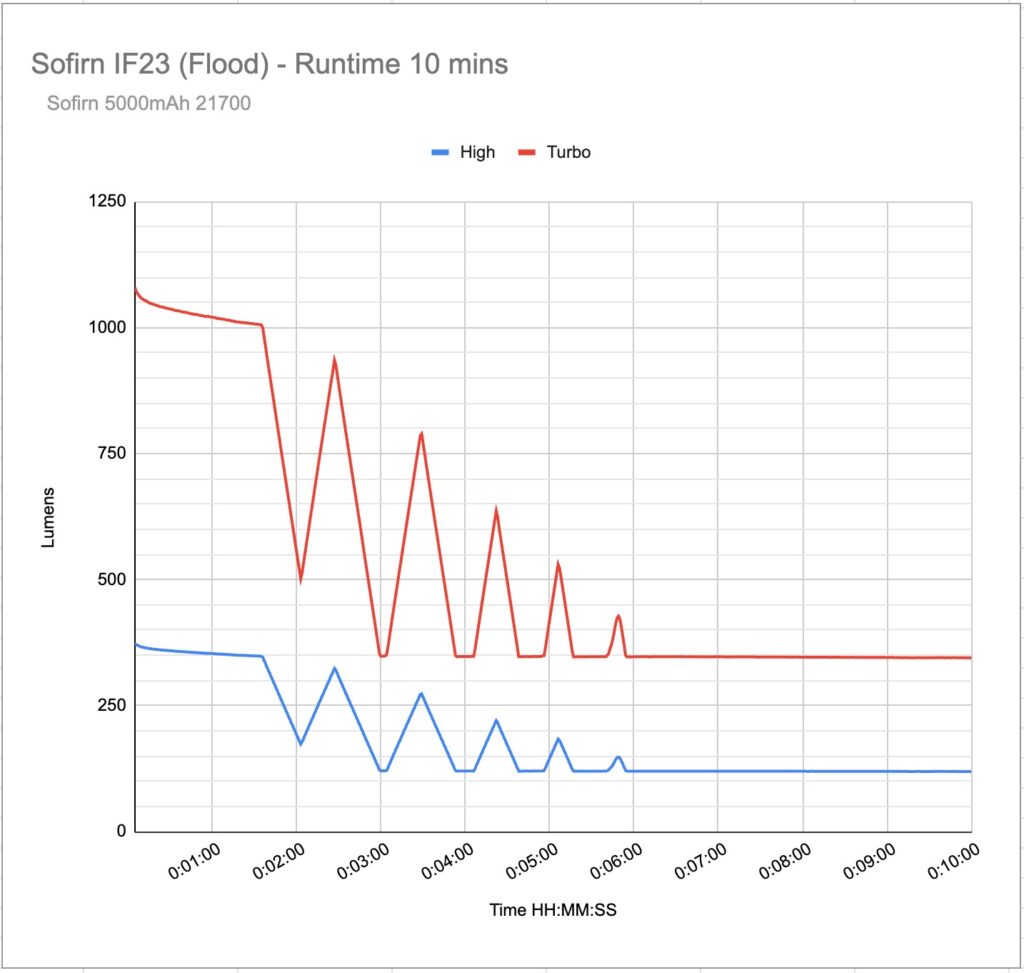
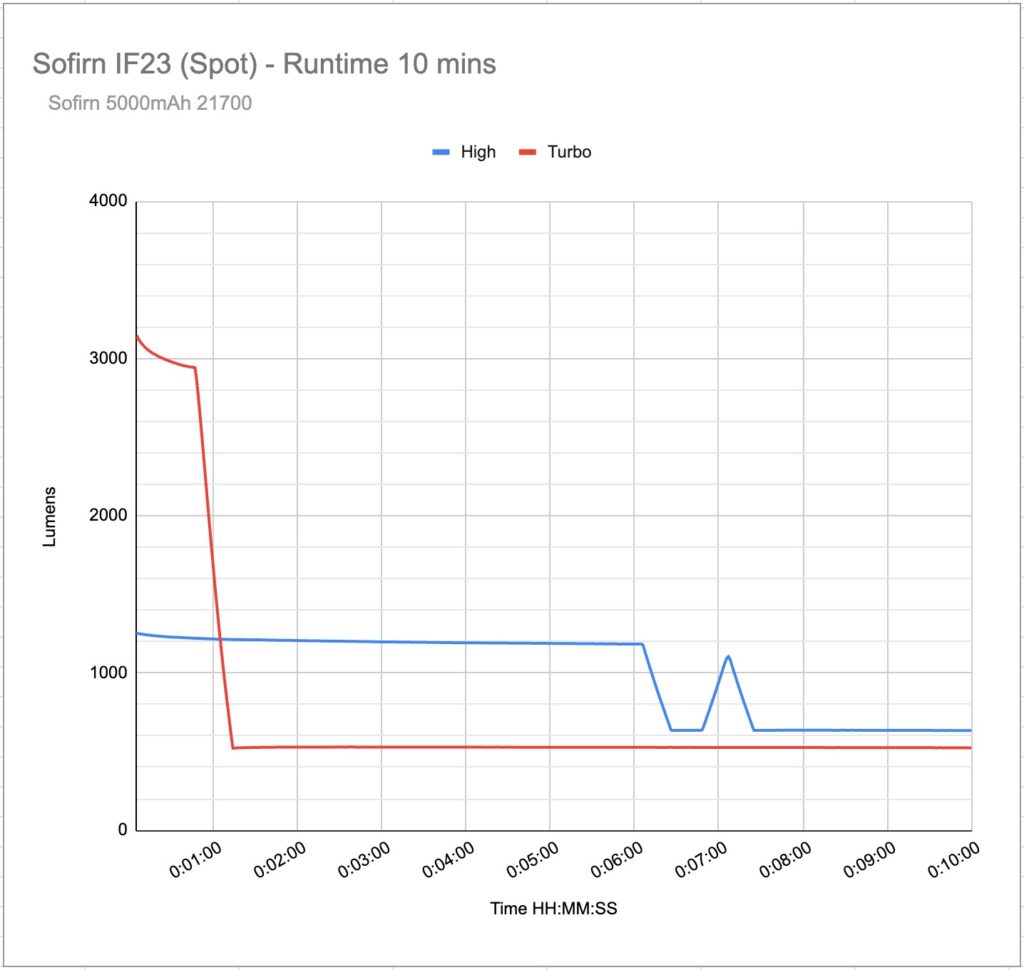
Peak beam intensity and beam distance measurements
About Peak beam intensity: Understanding ANSI FL1 Standards About peak beam intensity The calculated value of distance in meters at which the flashlight produces a light intensity of 0.25 lux. (0.25 lux is about the brightness of a full moon shining on an object). This means that the intensity has decreased so much, it becomes difficult to see darker objects, or objects that don’t reflect light. The columns ‘Meters’ and ‘Yards’ use rounded numbers.Spot:
| Mode | Specs | Candela measured | Meters | Yards |
|---|---|---|---|---|
| Low | 425 cd | 554 | 47 m | 51 yd |
| Medium | 2092.5 cd | 2134 | 92 m | 101 yd |
| High | 6375 cd | 5136 | 143 m | 156 yd |
| Turbo | 15275 cd | 9737 cd | 197 m | 215 yd |
Flood:
| Mode | Specs | Candela measured | Meters | Yards |
|---|---|---|---|---|
| High | 115.5 cd | 112 | 21 m | 23 yd |
| Turbo | 380 cd | 234 cd | 31 m | 34 yd |
Beamshots
Camera settings and distance: Canon EOS 200D – Canon 18-55mm EFS IS – 2”/F6.3/ISO 400/WB 5200k “Daylight”
15m
- Sofirn IF23
- JetBEAM RRT01 Raptor Nichia 219
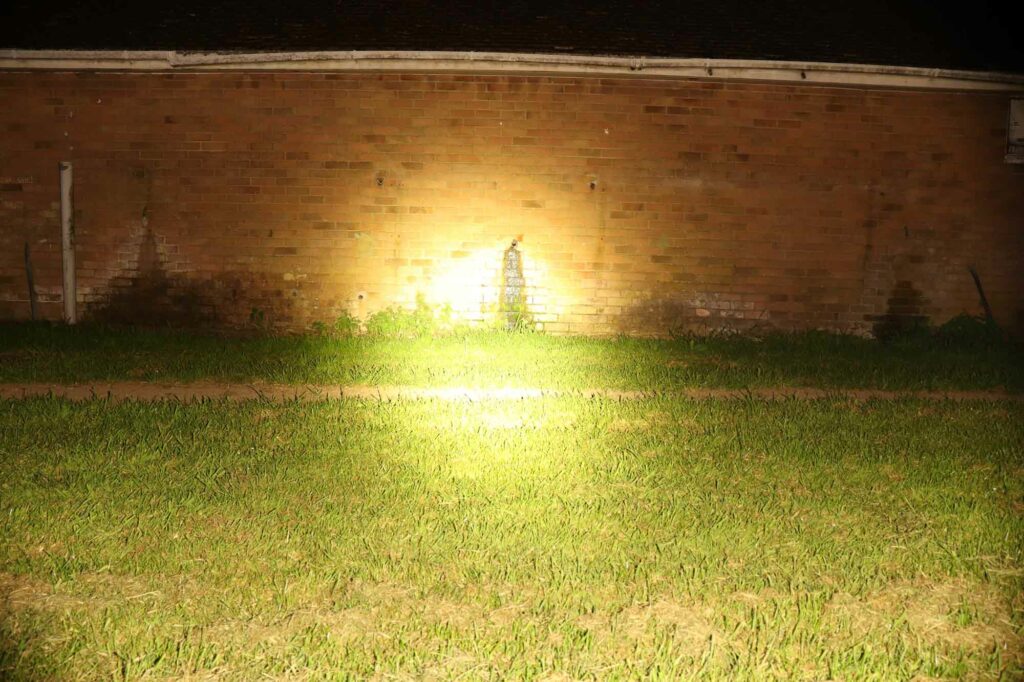

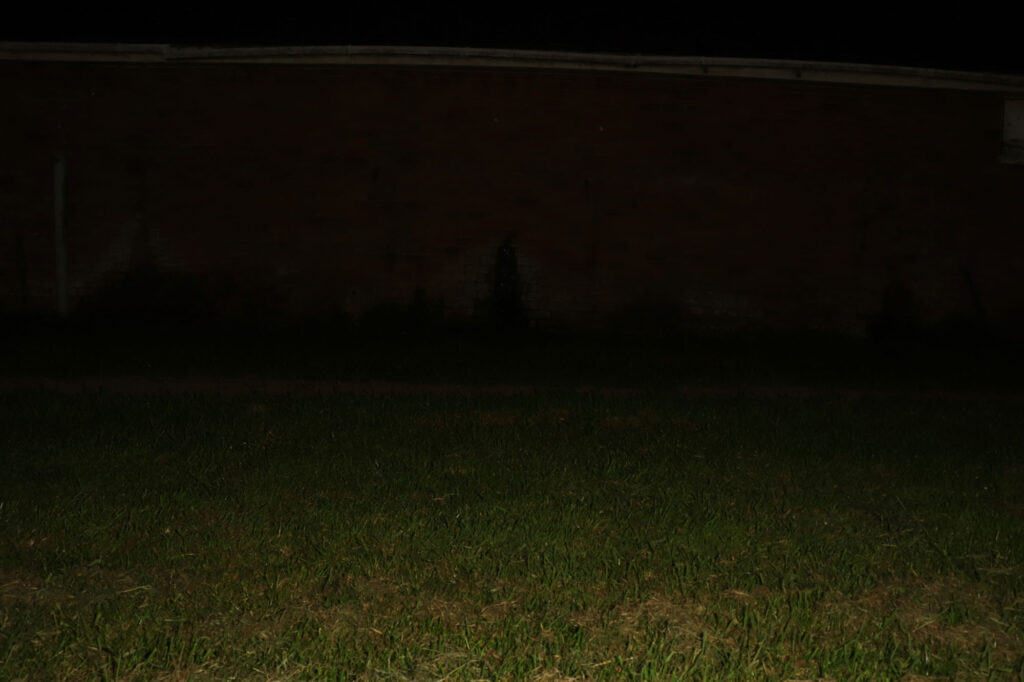




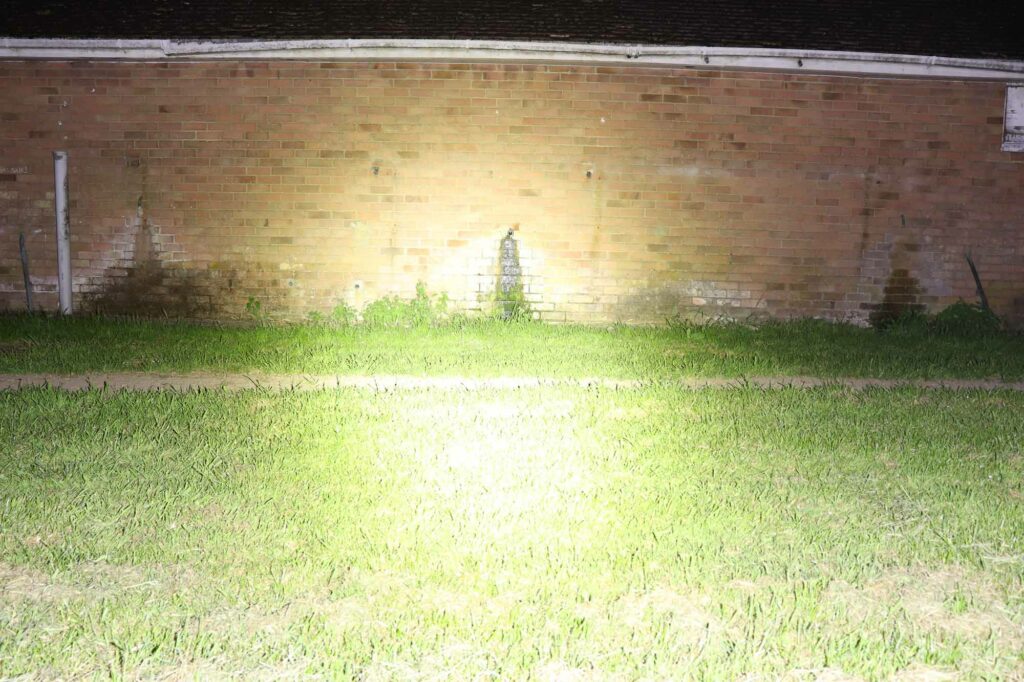
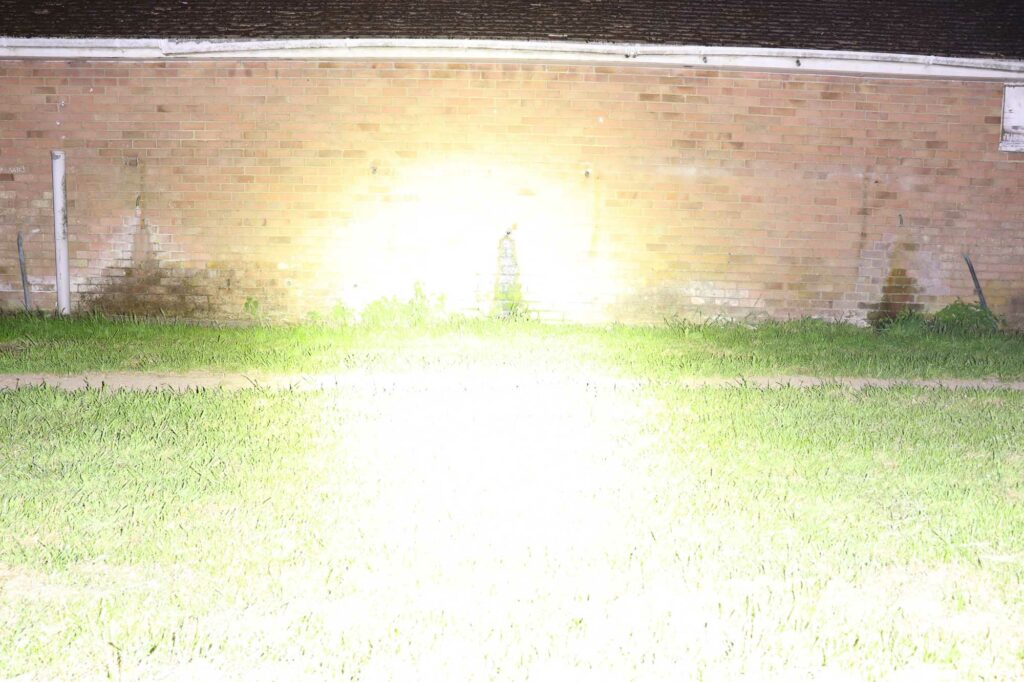
100m distance:
Beamshots of the following flashlights compared:
- Sofirn IF23
- Astrolux EA01 SST-40
- 4Sevens Maelstrom MMU SST-90
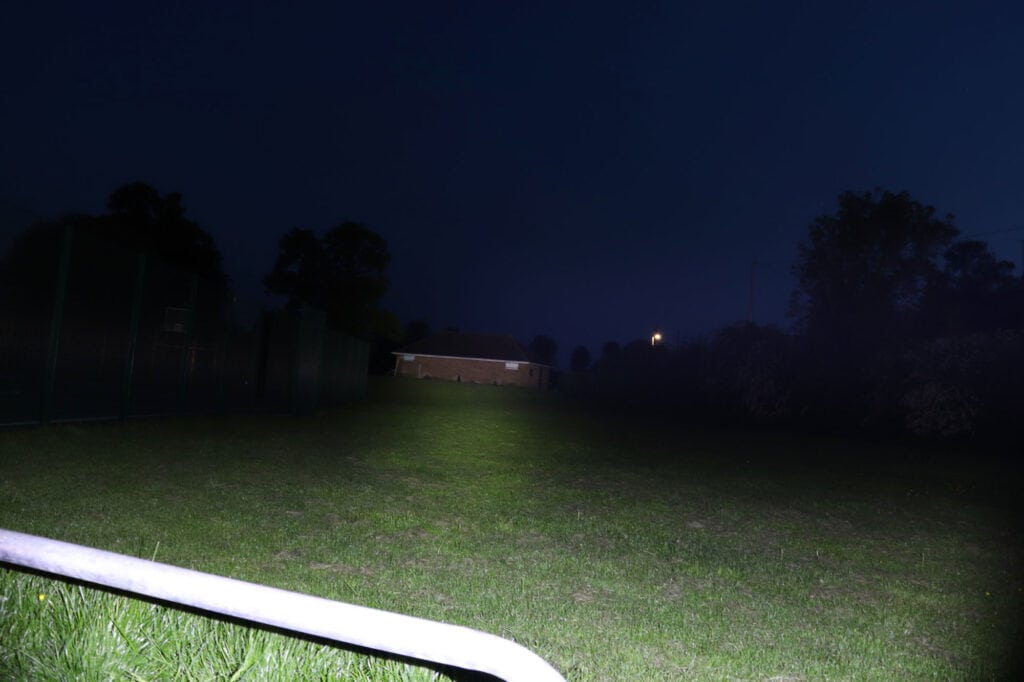
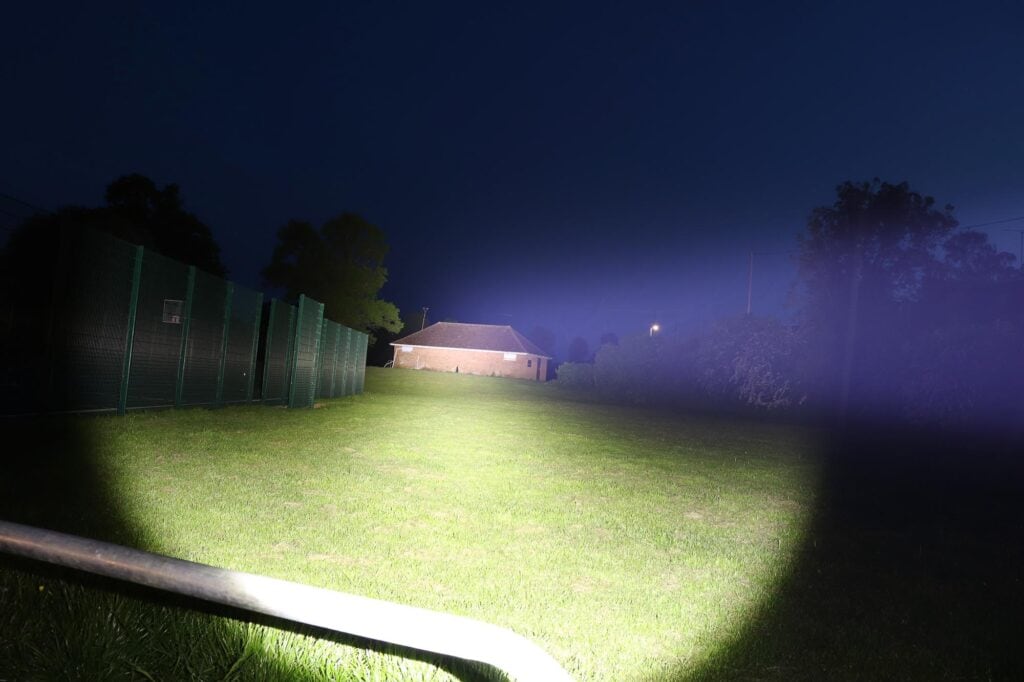
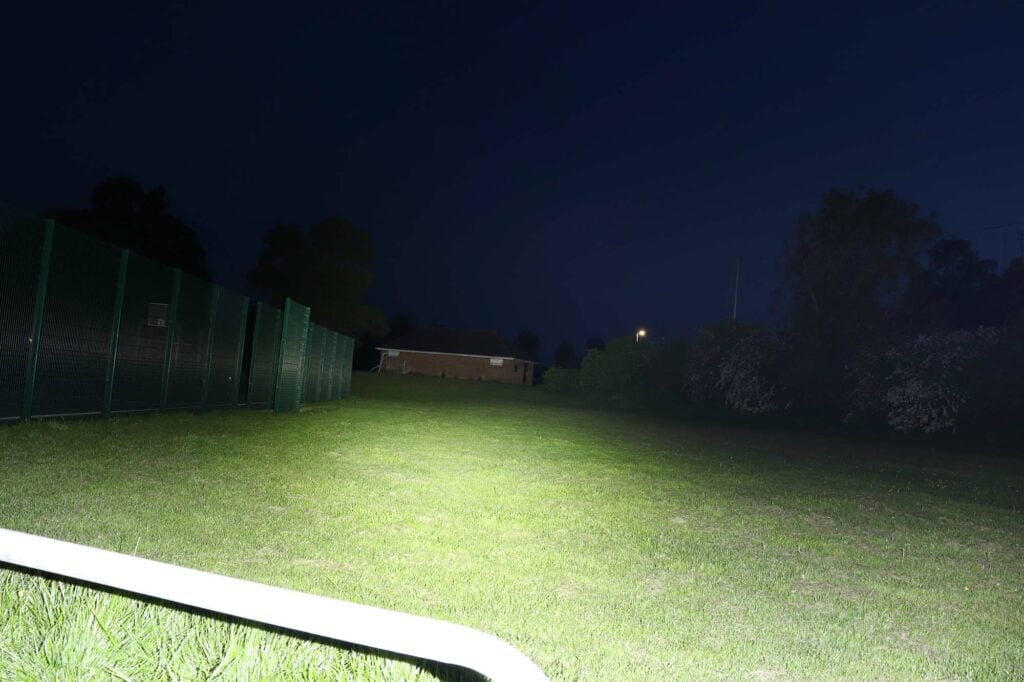
Disclaimer: This flashlight was sent to me for review at no cost by Sofirn. I have not been paid to review, nor have I been holding back on problems or defects.
Final Verdict
Pros
- Flood beam can be handy
- Spot beam profile
- Build quality
Cons
- Dreadful UI
- Too many modes
- Heavy
- Poor regulation
Explanation on star ratings:
1: Avoid: a match would be a better choice – 2: Poor: significant defect or issues; almost unusable – 3: Average: some defects or issues; but still usable 4: Good: recommended (minor issues) – 5: Great: highly recommended

2 stars: ★★
While our star rating provides a reliable indicator, we encourage you to read the full review to make an informed decision based on your own needs and preferences.
While the IF23 performs fairly well in the lab, it has many flaws; it is heavy, the side button protrudes too much, placing it down on a surface can push the button in and the beam is far too cool white for my liking.
The main problems, however, are around the user interface. It is trying to do way too many things with a single button making it complicated, even with the instructions in front of you. It also seems to behave inconsistently, or at least does things not covered by the instruction manual.
I also really wasn’t a fan of the regulation model with the output bouncing up and down, this patterns seems to happen on all tested modes.
The auto locking feature also has to be about the most annoying feature I’ve come across in ages. Each time you go to use this light it ends up flashing at you or turning on in the wrong mode. It is a hateful flashlight to use. Which is a shame, as the concept of a dual light (spot & flood) should be a good one. I’d much rather have had a slider switch to choose if I wanted either the spot of the flood function, then a single push button to control activation and modes. Trying to do it all from one button while also catering for a colour mode, ramping, lockout, blinkies and other modes, just ends up in a total frustration of a mess. I also cannot think of a single use case where you’d want the flood and spot modes running at the same time, they point in different directions!
Writing this I am very tempted to give this only one star, but ultimately I’m not that mean and actual beam performance and build quality are pretty good, so it earns a somewhat lowly 2 stars instead.
Edit by Marco: we got feedback from several users who don’t think the UI is that bad, and don’t really have trouble using it. This means again, that you should read the whole review before you decide to ignore or to buy it.
Buy your Sofirn here
1lumen selects and reviews products personally. We may earn affiliate commissions through our links, which help support our testing.